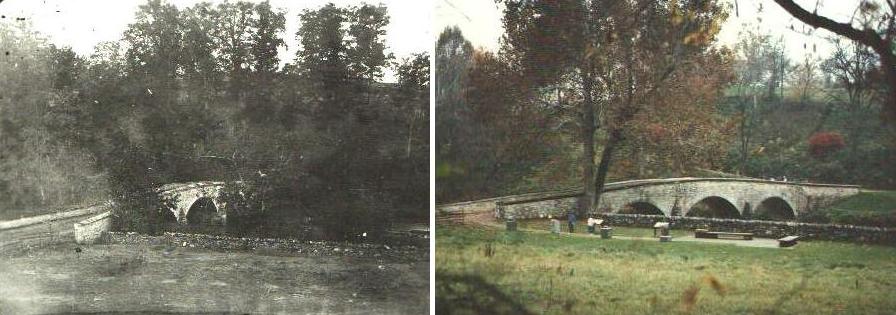
This pair of photos, modern and wartime, show the Lower Bridge from a rise in ground on the Union (east) side of the bridge. As can be seen, the general appearance of the region has not changed, although the modern photo had to be taken slightly upstream to avoid foliage. In fact, the large tree at the left foot of the modern photo is the same tree (then much smaller) that is in the wartime photo.
Two observations can be made here. First, the relatively open ground the Union troops would have to cross to get to the bridge, and the scarce amount of cover available while waiting to cross the bridge itself. Because of the narrowness of the bridge, with hundreds of men trying to cross a certain amount of waiting for one's turn was inevitable. Second, the Confederate high ground on the other side of the bridge provided them a clear tactical advantage over these fields. These two factors ultimately resulted in some 700 Union casualties.
If one were to accept the notion that the bridge had to be taken in order to affect a crossing, it should be clear the task would not be trivial.
The high ground from which this photo was taken (about halfway up the rise) was used as a staging area for three of the Union assaults - the 11th Connecticut, Nagle's second charge, and the right wing of Ferrero's Brigade.